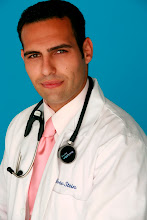So what does this have to do with CTS? This analogy depicts what essentially happens when CTS occurs. Picture an assembly line worker packaging cookies. The cookies come out of the oven 6 rows deep at a rapid pace. There are normally 6 people working the line, 3 on each side, but for the last two weeks, one of the workers has been out on maternity leave and no one was assigned to that position… leaving 5 workers doing the work 6 people usually share. Let’s say, conservatively, there are 25 cookies packaged per minute. In 60-minutes, 1500 cookies (25×60) are packaged; in an 8 hour day 12,000 cookies are packed, and in a 40 hour work week, 48,000 cookies are packaged (by each worker)! That’s a lot of fast, repetitive movements requiring bending forward and reaching, gripping, and moving the cookies into a tray and then stacking the trays.
If there are workers absent or the employer decides to speed up the line and force overtime, most of the workers will reach their limit and hurt. Especially those with other problems that make them more susceptible to CTS like low thyroid function, diabetes, obesity, age over 50, inflammatory arthritis, when taking birth control pills…..you get the picture!. Hence, when working too fast, just like when there are too many cars on the road during rush hour, the fast paced work inflames the tendons in the carpal tunnel and pinches the nerve. This creates pain and numbness/tingling that either slows the worker down or completely forces him/her to have to take time off from the job. When working at a slower, more comfortable pace, there is less friction between the carpal tunnel tendons and, therefore, no or significantly less nerve compression and CTS signs or symptoms, just like driving through the construction site without slowing down when avoiding rush hour.
Why is this? CTS occurs frequently in people who perform fast, repetitive hand movements like our cookie factory worker. That’s because there are 9 tendons attaching the muscles located in the upper forearm (on the palm side) to the fingers in the hand. These tendons travel very close together, especially as they pass through the carpal tunnel of the wrist. These tendons allow us to pick things up (grip and pinch), shake hands, hold babies delicately and function normally in our daily activities. As these 9 tendons pass through this tight tunnel, when it’s “rush hour” or, when fast, repetitive work is occurring, these 9 tendons rub together and they heat up, swell and the pressure inside the tunnel increases. Because the nerve (median nerve) passes through the same tunnel, as the tendons swell, the nerve is pinched or pressed up against the border of the tunnel and numbness / tingling occurs into the palm and fingers 2-4. We find ourselves dropping things, having a hard time buttoning clothes, threading a needle, opening jars, holding onto a steering wheel, and frequently, we wake up at night needing to shake and flick our fingers to “…wake them up.”
Because these symptoms gradually appear, we usually don’t run to our doctor until several months (and sometimes years) after the symptoms have been present. This makes it more challenging to treat CTS and all patients with these symptoms are encouraged to seek treatment as soon as problems start. There are frequently other problems in the neck, shoulder, and elbow because we tend to compensate, move differently and use other muscles when there is pain so the elbow, shoulder and neck become involved and require attention. This is why a chiropractor who treats all of these areas is the perfect choice. If you, a friend or family member require care for CTS, we would be honored to render our services

No comments:
Post a Comment